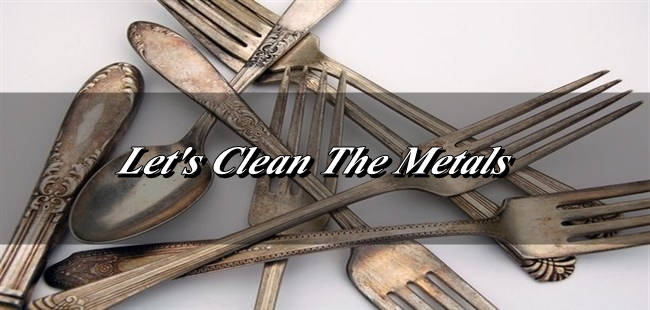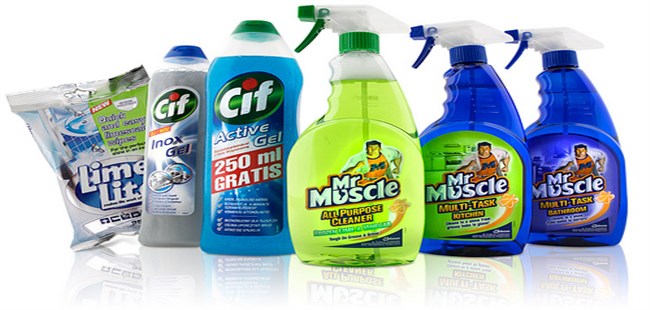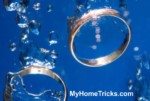Metal items must be cleaned regularly, or they will tarnish and, on some metals, verdigris may appear. This is much harder to remove than a layer of dirt. If you do not have time to clean thoroughly, there are ways to restore shine.
Cleaning Silver
Silver tarnishes easily so must be cleaned for particular types of silver than others. You need to clean your silvers frequently. There are many different may need more than one product, depending on methods to choose from, some more suitable on the sizes of your silver objects.
Silver-Cleaning Equipment
Keep silver polish or cloths impregnated with cleaning fluid for polishing large silver items. A silver dip is useful for cleaning jewelry. Use soft toothbrushes to clean embossed items and dusters for buffing polish. If you use your silver only rarely, store it in a tarnish-proof bag, or wrap items in acid-free tissue paper – both of these will keep tarnish from developing in storage. Silver keeps best if it is used.
Applying Basic Cleaning Techniques
General care: Wash your silver regularly in hot water and dishwashing liquid, and you will not have to polish it very often. Dust and wash ornaments once a week.
Dos and don’ts: Clean silver near an open window to stop fumes from collecting. Do not rub hallmarks too hard – you will wear them away and reduce the value of the piece.
Cleaning Embossed Silver
Use a soft toothbrush to apply silver polish to embossed silver. Alternatively, apply polish on a cotton swab, or an orange stick wrapped with cotton.
Handling Clean Silver
After you have cleaned silver, wrap it in acid-free tissue paper or place in a tarnish-proof bag if you plan to store it. Wear gloves to avoid leaving finger marks.
Keeping Silver Clean
• Preventing tarnish: Do not store silver items in plastic bags or plastic wrap. These trap condensation, which will encourage tarnishing.
• Alternative cleaners: To remove bad tarnish from silver objects, first dissolve a handful of washing soda in hot water in an aluminum pan. Place the objects in the solution, and remove them as soon as the tarnish disappears. Rinse, and polish. Alternatively, use a paste made from salt and lemon juice. Brighten silver quickly with a drop of turpentine on a soft cloth.
• Homemade cleaning cloths: Make your own impregnated cloths by saturating cotton squares in a solution of two parts ammonia, one part silver polish, and 10 parts cold water. Let cloths drip dry.
Protecting Silver Objects
Polish silver at the first hint of tarnish. Buy a tarnish-proof bag with compartments for each piece of sliver – or make your own from baize. Avoid overcleaning antique silver — its charm lies in its slightly aged look; there is no need to make it look brand new.
Silver Tableware
• Salt shakers: Do not put salt directly into a silver shaker – use a glass liner. Remove the salt after each use.
• Coffeepots: Remove stains from silver coffeepot interiors by rubbing them with a piece of fine steel wool dipped in white vinegar and salt.
• Teapots: To clean tea- stained interiors, fill teapots with boiling water, and add a handful of washing soda. Soak overnight, then rinse.
• Candlesticks: Remove wax by pouring hot water over the candlestick. Melt wax on the base with a hairdryer. Storage Place a couple of white sugar lumps inside a silver coffee pot between uses to prevent a stale smell. Store with the lid off.
Traditional Tip
Avoiding Tarnishing:Salt, egg yolk, broccoli, and fish are all notorious enemies of silver – they cause it to tarnish. Wash silverware immediately after it has been in contact with any of these foods. Then rinse and dry the silver thoroughly.
Cleaning Small Items
Paint clear nail polish on the posts of earrings to stop tarnish from causing ear infections.
Napkin Rings
To clean intricate engravings on silver napkin rings, rub in a little toothpaste with a soft cloth.
Silver Plated Items
• Cleaning: Treat silverplated items as if they were solid silver – but with more care, since the coating can come off. Do not polish silver gilt; you may rub it off. Just dust every now and again.
• Restoring silverplate: Dip worn silverplate in a special solution that applies a silver coating to it. This will wear off with polishing and must be reapplied. Do not use the solution for valuable pieces.
Caring For Silver Cutlery
• Always wash silver cutlery as soon as possible after it has been used – this prevents food from causing tarnish stains. To clean a lot of silver cutlery quickly, put strips of aluminum foil in a large bowl, and place the silver cutlery on top. Cover the cutlery with boiling water, then add 3 tbsp (45 ml) of baking soda, and soak for 10 minutes.
• Dishwashing silver: Never wash silver and stainless-steel pieces of cutlery together in a dishwasher, since the silver may be damaged by the steel.
• Decorative handles: Whiten bone handles with a paste of lemon juice and soapstone, applied and left for an hour. Do not immerse bone or mother-of-pearl handles in water, since they may be damaged.






